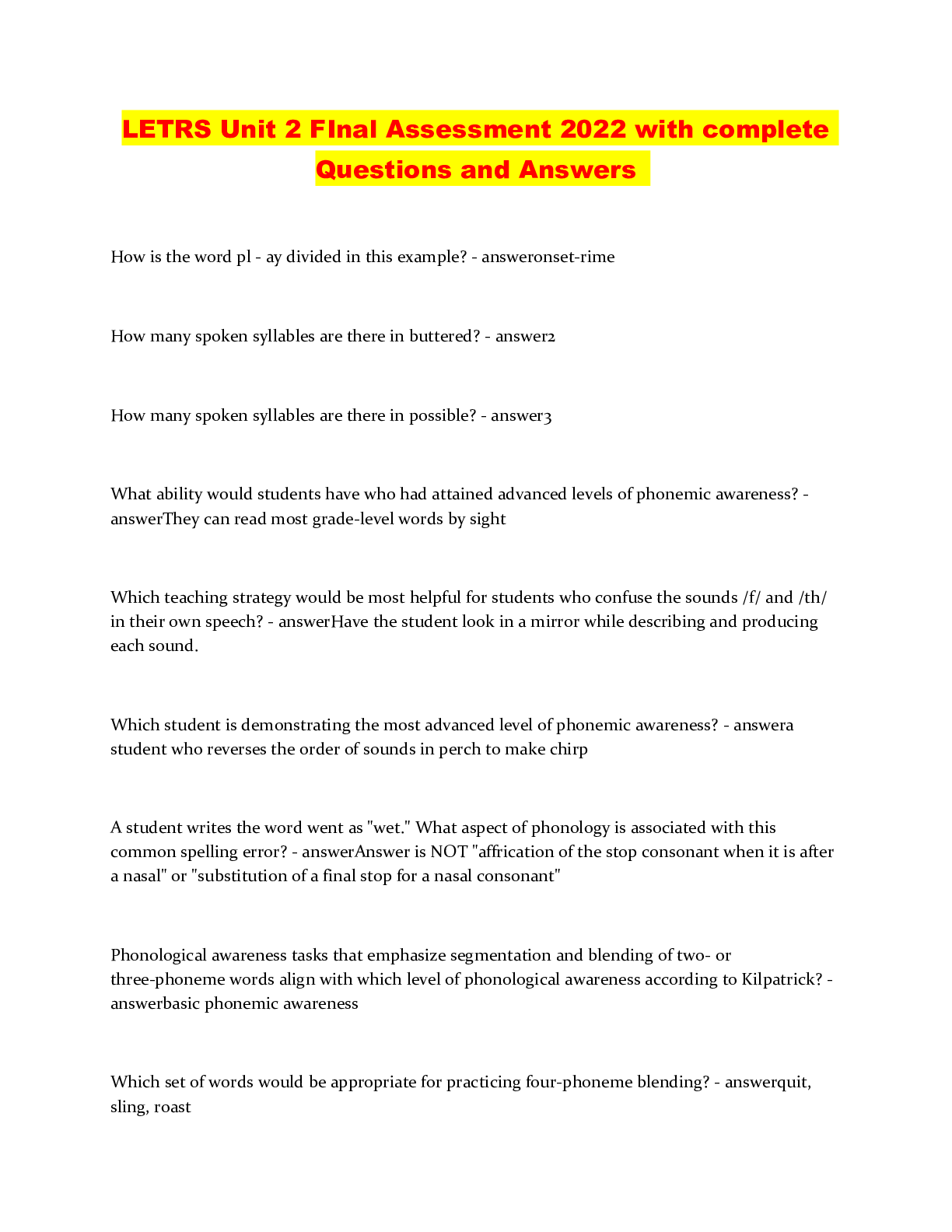*NURSING > QUESTIONS & ANSWERS > Chapter 14--Complementary and Alternative Therapies (All)
Chapter 14--Complementary and Alternative Therapies
Document Content and Description Below
Chapter 14--Complementary and Alternative Therapies MULTIPLE CHOICE 1. A client from the Asian culture tells the nurse that he has blockages in his life force that are causing him to have a dis... ease. The nurse realizes that within this culture, the life force is considered: 1. Ayurveda. 2. Chi. 3. Prana. 4. Qi. PTS: 1 DIF: Analyze REF: History of Complementary and Alternative Therapies 2. The nurse is planning to learn Reiki to become a master practitioner. Which level of learning will the nurse need to achieve in order to become a Reiki master? 1. Level I 2. Level II 3. Level III 4. Level IV PTS: 1 DIF: Analyze REF: Reiki 3. A client tells the nurse that she utilizes biofeedback to combat chronic back pain. The nurse identifies this type of complementary alternative medicine as being: 1. biological therapy. 2. mind-body therapy. 3. body-based therapy. 4. energy therapy. PTS: 1 DIF: Analyze REF: NCCAM Categories of Complementary and Alternative Therapies 4. A client tells the nurse that his health has improved since he starting practicing tai chi. The nurse realizes this alternative medicine approach: 1. is a modern form of yoga. 2. uses breathing, movement, and posture. 3. enhances the flow of prana. 4. improves the flow of chi through the meridians of the body. PTS: 1 DIF: Analyze REF: Tai Chi 5. After an assessment, the nurse believes a client would benefit form the care of a chiropractor. Which of the following health problems could be addressed with this form of alternative therapy? 1. Headache 2. Sinusitis 3. Anemia 4. Kidney stones PTS: 1 DIF: Analyze REF: Chiropractic Therapy 6. When asked about an armband that a pregnant client is wearing, the client tells the nurse that it helps reduce morning sickness. The nurse realizes this client is utilizing which form of alternative medicine? 1. Acupressure 2. Acupuncture 3. Reiki 4. Guided imager PTS: 1 DIF: Analyze REF: Acupressure 7. A client tells the nurse that she is having a series of massages to break up scar tissue created from back surgery which have caused uneven hip and shoulder height. The nurse realizes the type of massages the client is receiving would be: 1. shiatsu. 2. rolfing. 3. therapeutic. 4. relaxation. PTS: 1 DIF: Analyze REF: Rolfing 8. A client tells the nurse that he believes watching old comedy movies has helped him achieve a quick recovery from orthopedic surgery. The nurse realizes this client has been using which of the following forms of complementary alternative medicine? 1. Meditation 2. Prayer 3. Humor 4. Music PTS: 1 DIF: Analyze REF: Humor 9. A client tells the nurse that she is not concerned about recovering from an acute illness since she has several people from her church praying for her health. The nurse realizes this client is utilizing which form of complementary alternative medicine? 1. Denial 2. Wishful thinking 3. Intercessory prayer 4. Positive thinking PTS: 1 DIF: Analyze REF: Intercessory Prayer 10. A client tells the nurse that he ingests only herbal preparations and not medications prescribed from a physician. Which of the following should the nurse respond to this client? 1. “How long have you been using herbal preparations?” 2. “Are you aware of the side effects of using herbal preparations?” 3. “They must be working.” 4. “They are probably less expensive than other medications.” PTS: 1 DIF: Apply REF: Herbal Therapies 11. The nurse is providing a client with a massage in order to create which of the following benefits? 1. Reduce blood glucose level 2. Increase heart rate 3. Reduce blood pressure 4. Enhance appetite PTS: 1 DIF: Apply REF: Massage Therapy 12. A client tells the nurse that she is interested in learning yoga to help with chronic back and leg pain. Which of the following should the nurse respond to this client? 1. “Local organizations have yoga classes and training programs that you could attend.” 2. “Yoga is not as good acupuncture.” 3. “Tai chi is probably better for you.” 4. “Have you considered weight training?” PTS: 1 DIF: Apply REF: Yoga 13. The client tells the nurse that his practitioner recommended whirlpool baths to relieve chronic back spasms. The nurse realizes the client is participating in which type of complementary alternative medicine approach? 1. Naturopathy 2. Homeopathy 3. Osteopathy 4. Heroic PTS: 1 DIF: Analyze REF: Naturopathy MULTIPLE RESPONSE 1. A client tells the nurse that she uses alternative forms of health care to help with her chronic health problems. The nurse realizes that which of the following would be considered alternative forms of health care? (Select all that apply.) 1. Acupuncture 2. Chiropractic 3. Weight lifting 4. Cycling 5. Massage 6. Yoga PTS: 1 DIF: Analyze REF: Table 14-1 CAM Therapies Used in the United States 2. A client tells the nurse that he rarely sees a physician and relies upon complementary alternative medicine therapies to address ailments. Which of the following should the nurse be aware of regarding these different types of therapies? (Select all that apply.) 1. Potential benefits of complementary alternative medicine therapies 2. Cost of complementary alternative medicine therapies 3. Frequency of use 4. Drug interactions 5. Location of providers 6. Length of time used ANS: 1, 2, 4 PTS: 1 DIF: Analyze REF: Box 14-1 Healthy People 2010 and Complementary and Alternative Therapies 3. A client tells the nurse that her primary care physician is an osteopath. The nurse realizes that this physician will utilize which of the following approaches when providing care to the client? (Select all that apply.) 1. Hypnosis 2. Manipulation 3. Tai chi 4. Surgery 5. Yoga 6. Medications PTS: 1 DIF: Analyze REF: History of Complementary and Alternative Therapies in the United States 4. The nurse is using guided imagery to help reduce a client’s pain level. When using this alternative medicine approach, which of the following client senses can be used? (Select all that apply.) 1. Visual 2. Auditory 3. Kinesthetic 4. Cognitive 5. Gustatory 6. Olfactory PTS: 1 DIF: Apply REF: Table 14-2 Incorporating All Five Senses into Guided Imagery 5. The nurse has identified the diagnosis of Disturbed Energy Field as appropriate for a client. Which of the following are identified causes for the slowing or blocking of this client’s energy field? (Select all that apply.) 1. Pathological 2. Socioeconomic 3. Situational 4. Treatment-related 5. Environmental 6. Maturational PTS: 1 DIF: Analyze REF: Energy Therapies [Show More]
Last updated: 1 year ago
Preview 1 out of 6 pages

Reviews( 0 )
Document information
Connected school, study & course
About the document
Uploaded On
Jan 21, 2020
Number of pages
6
Written in
Additional information
This document has been written for:
Uploaded
Jan 21, 2020
Downloads
0
Views
82








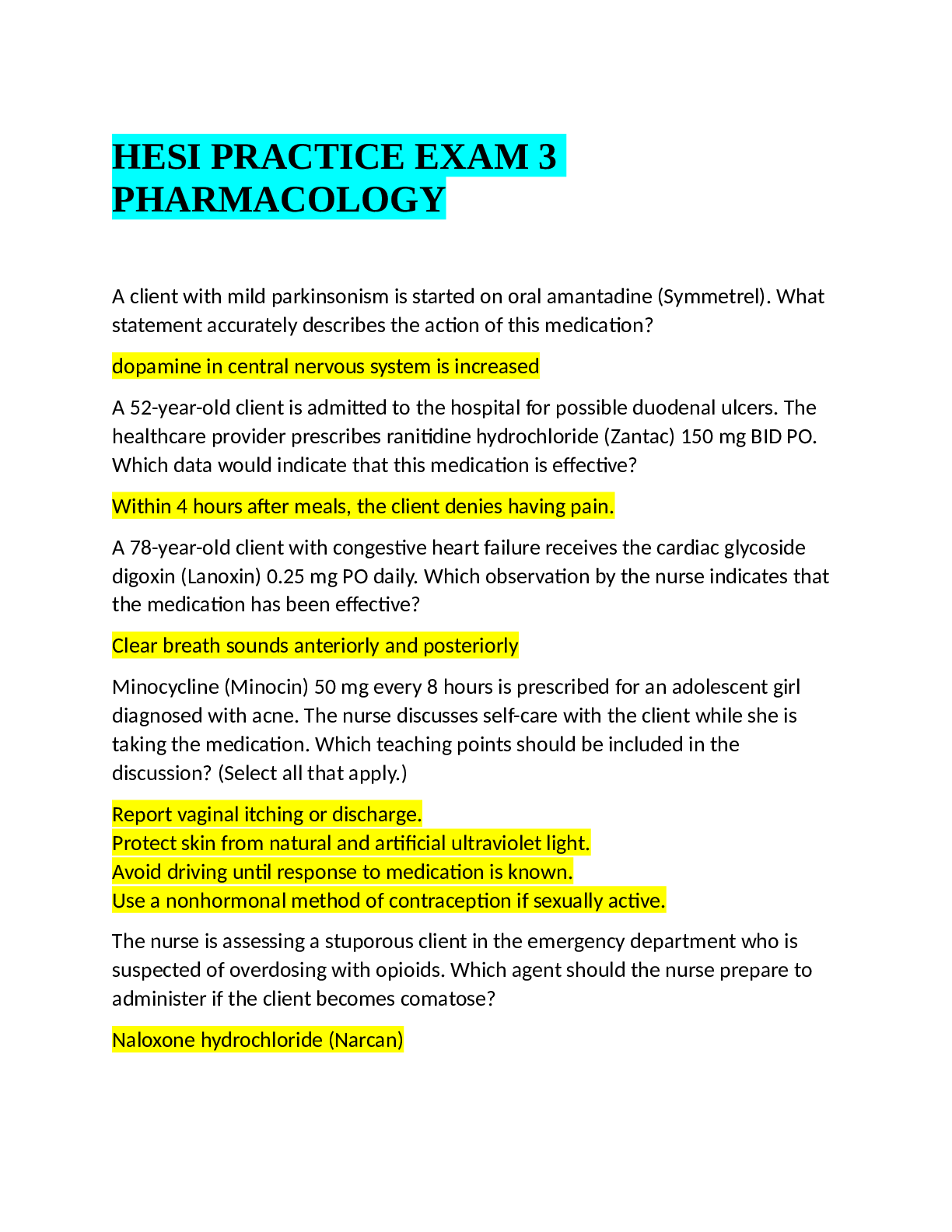




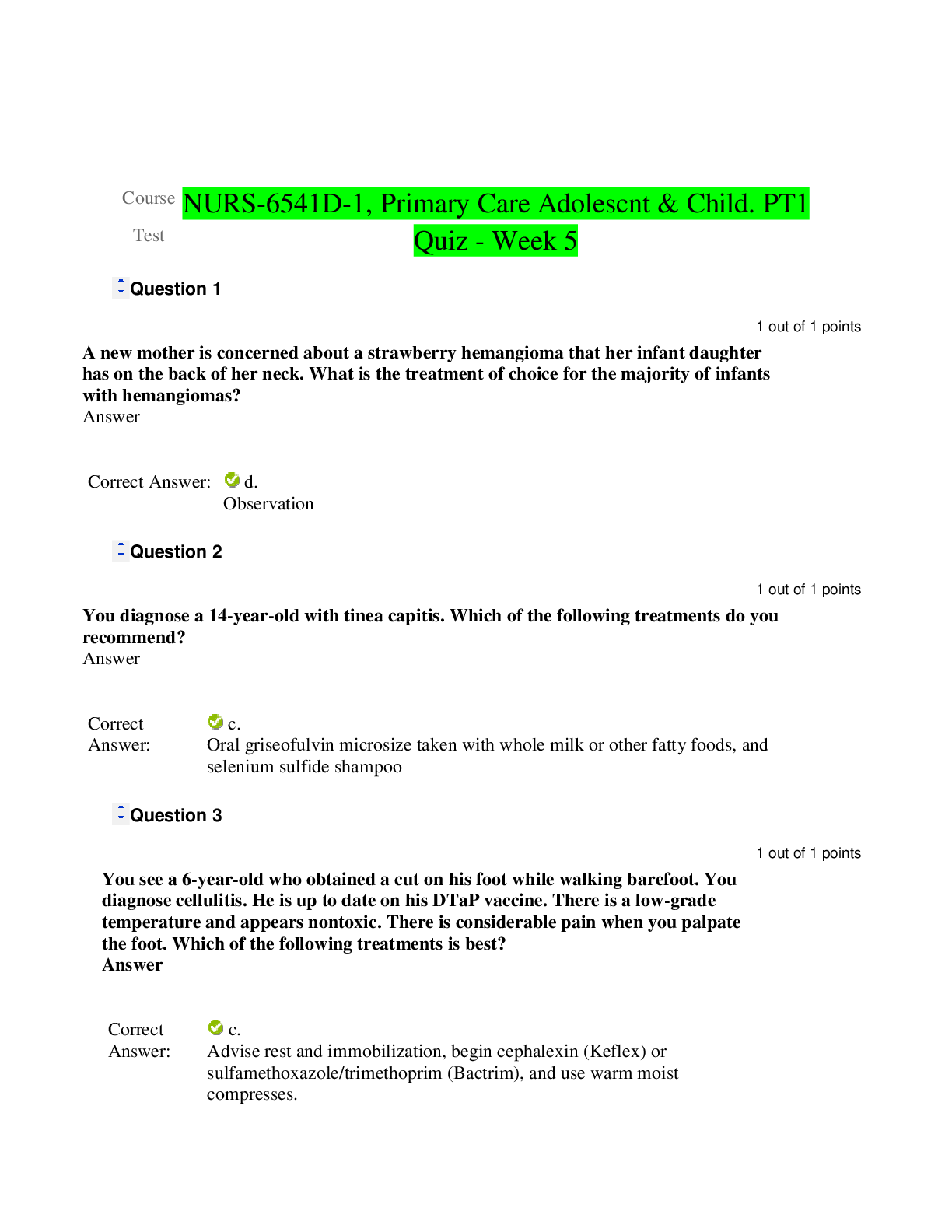
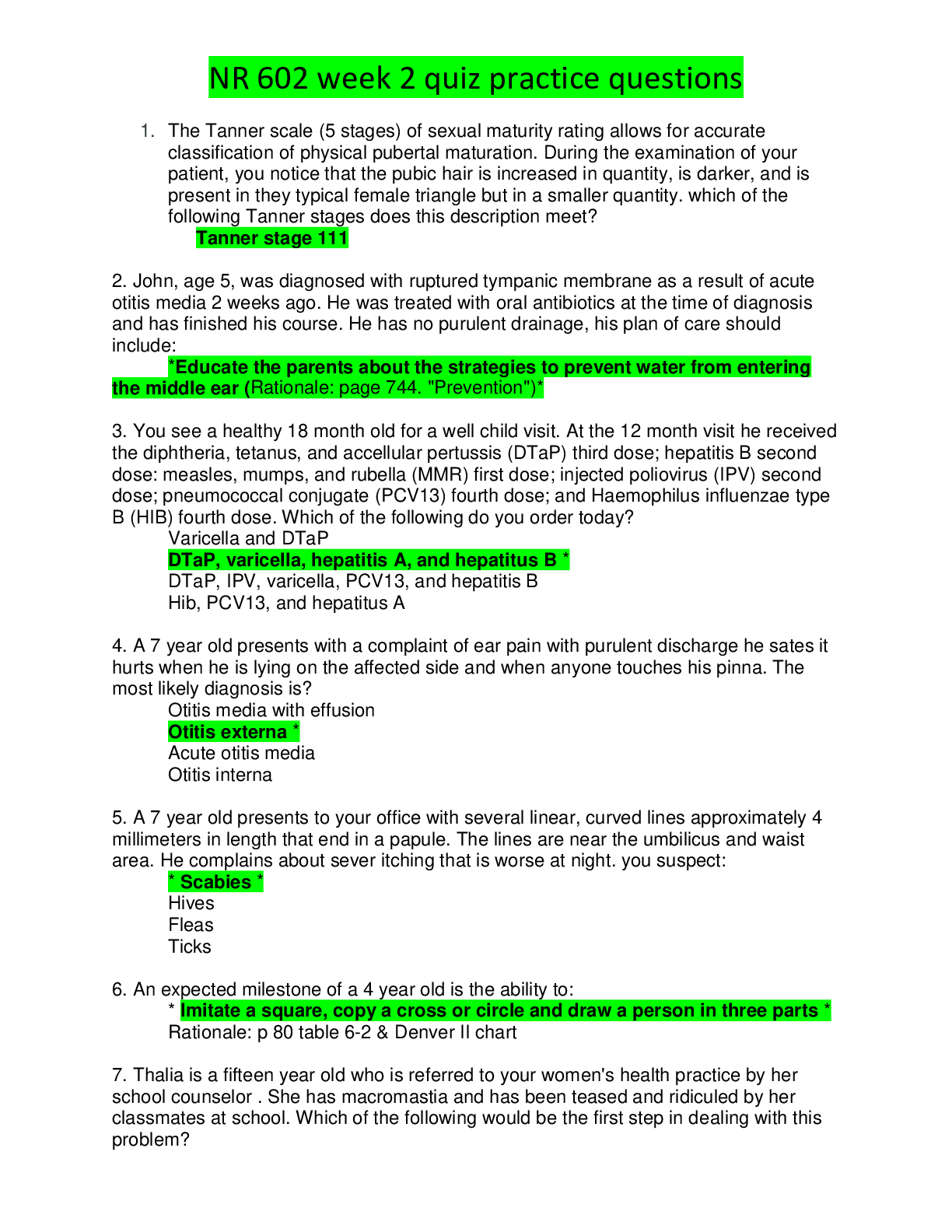
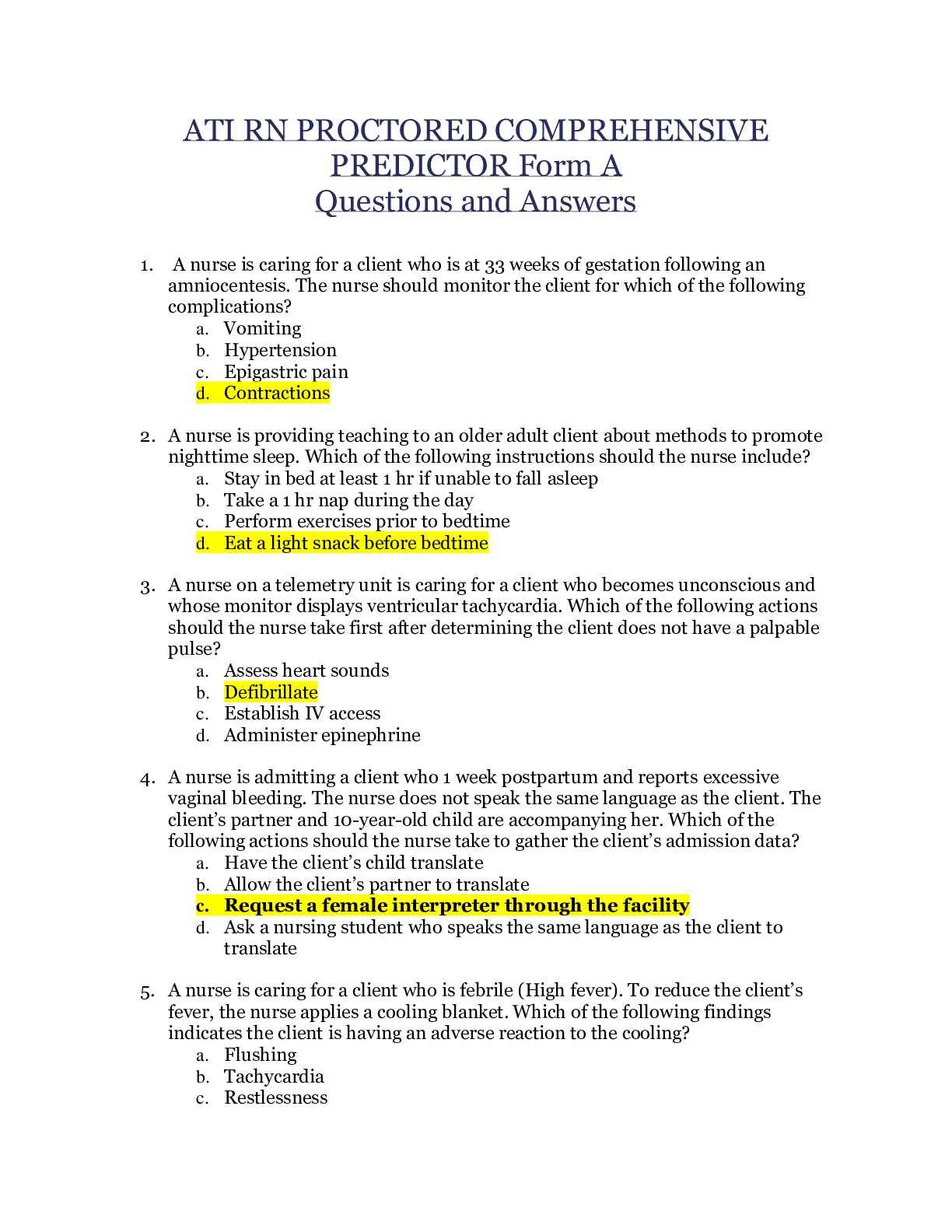
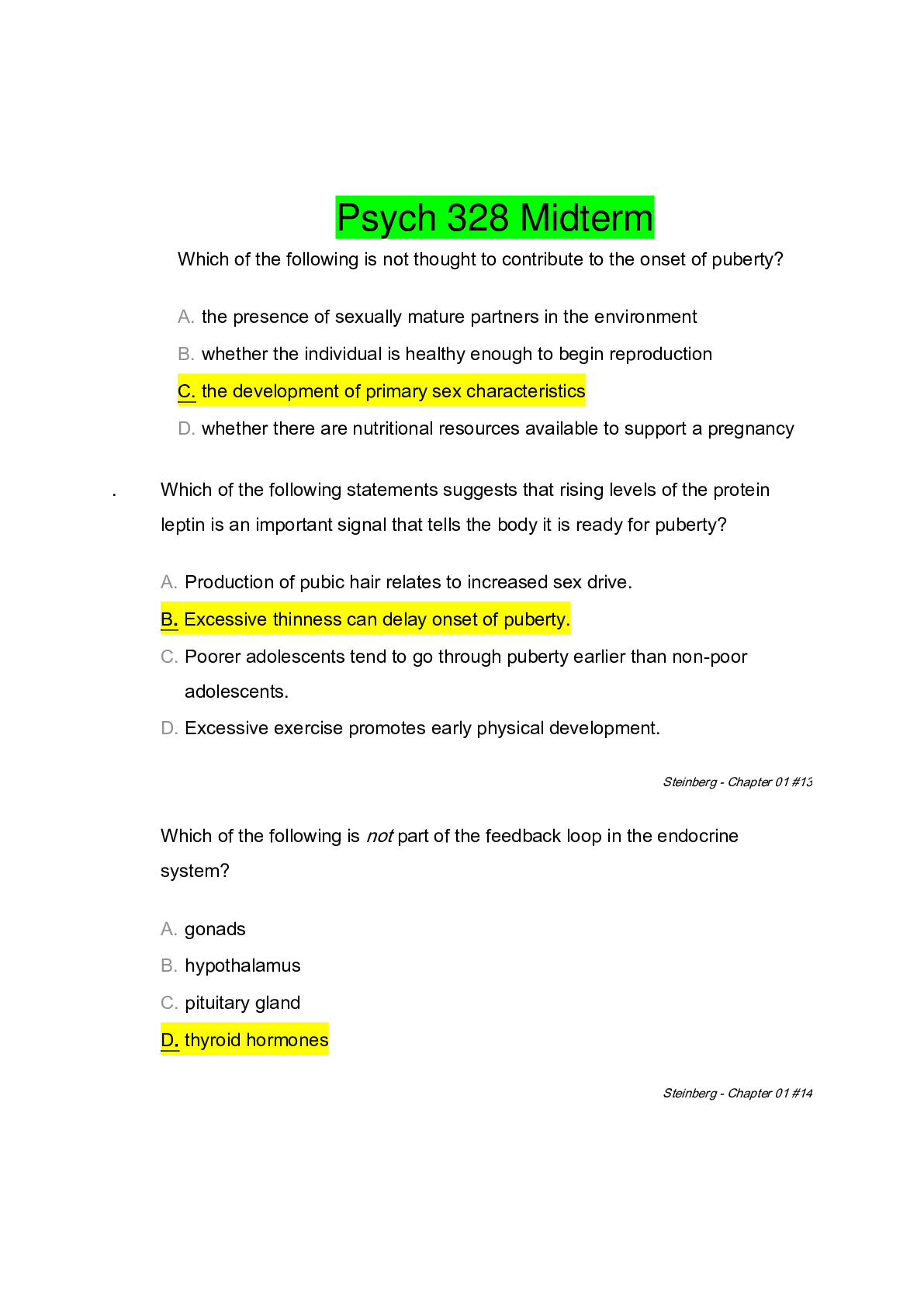
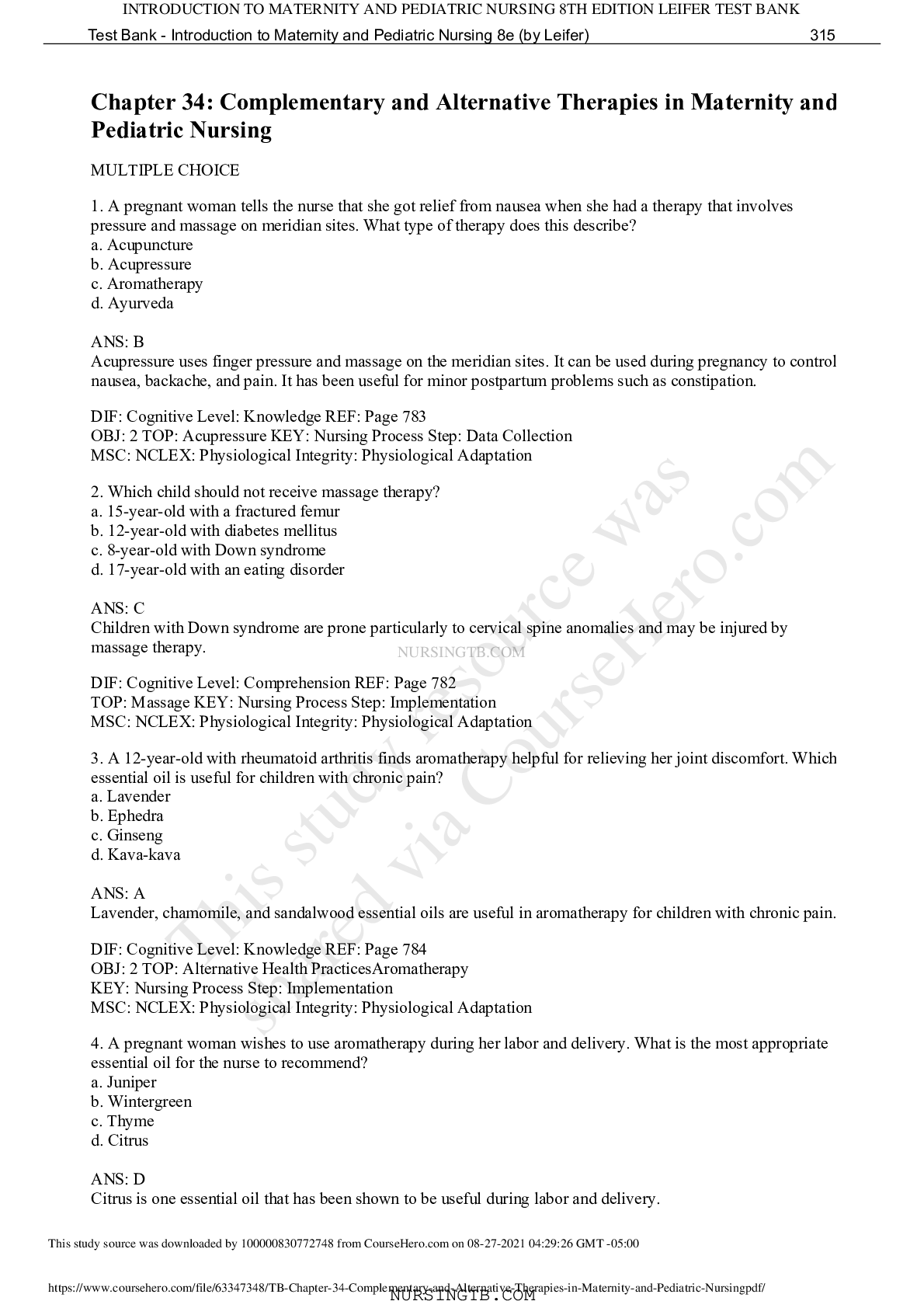
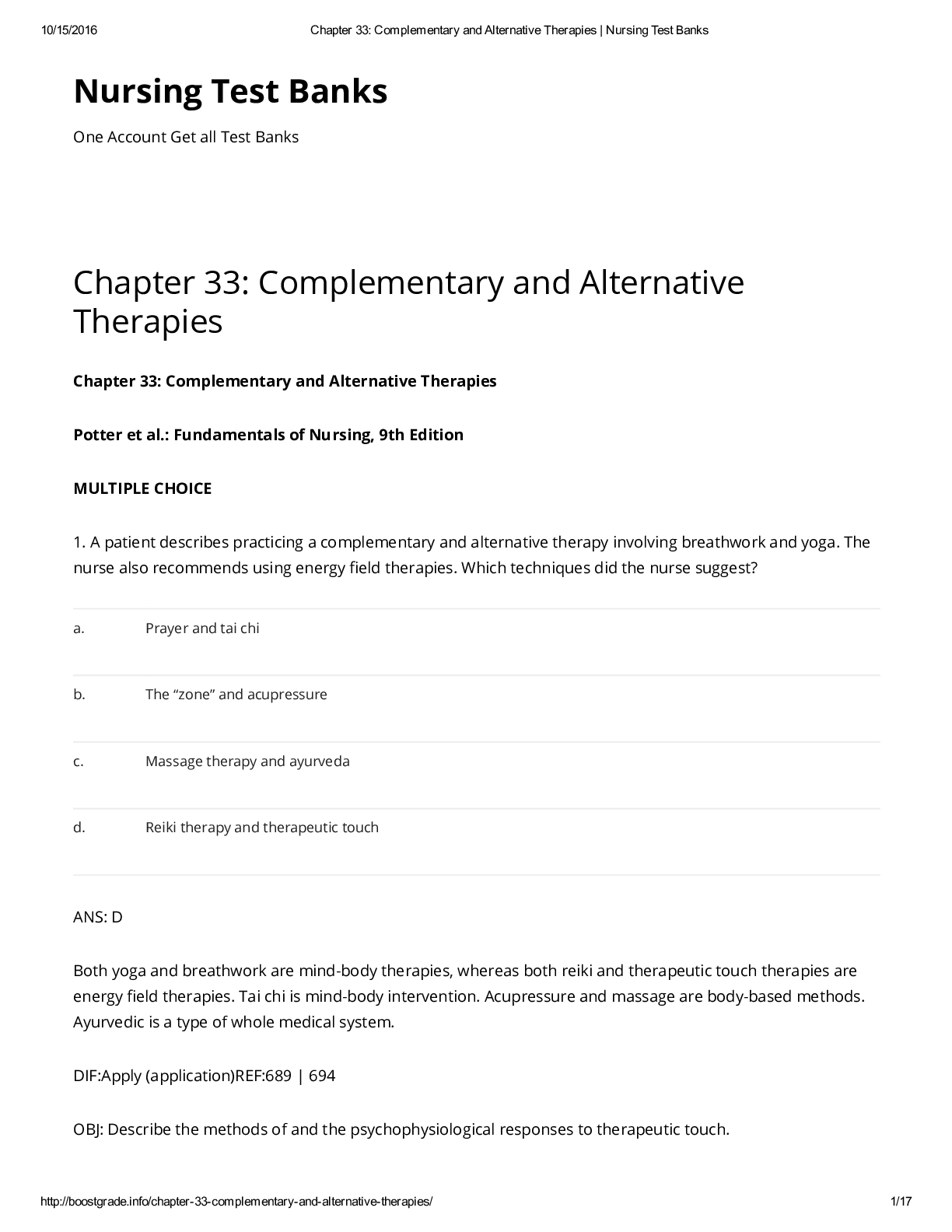




.png)

.png)

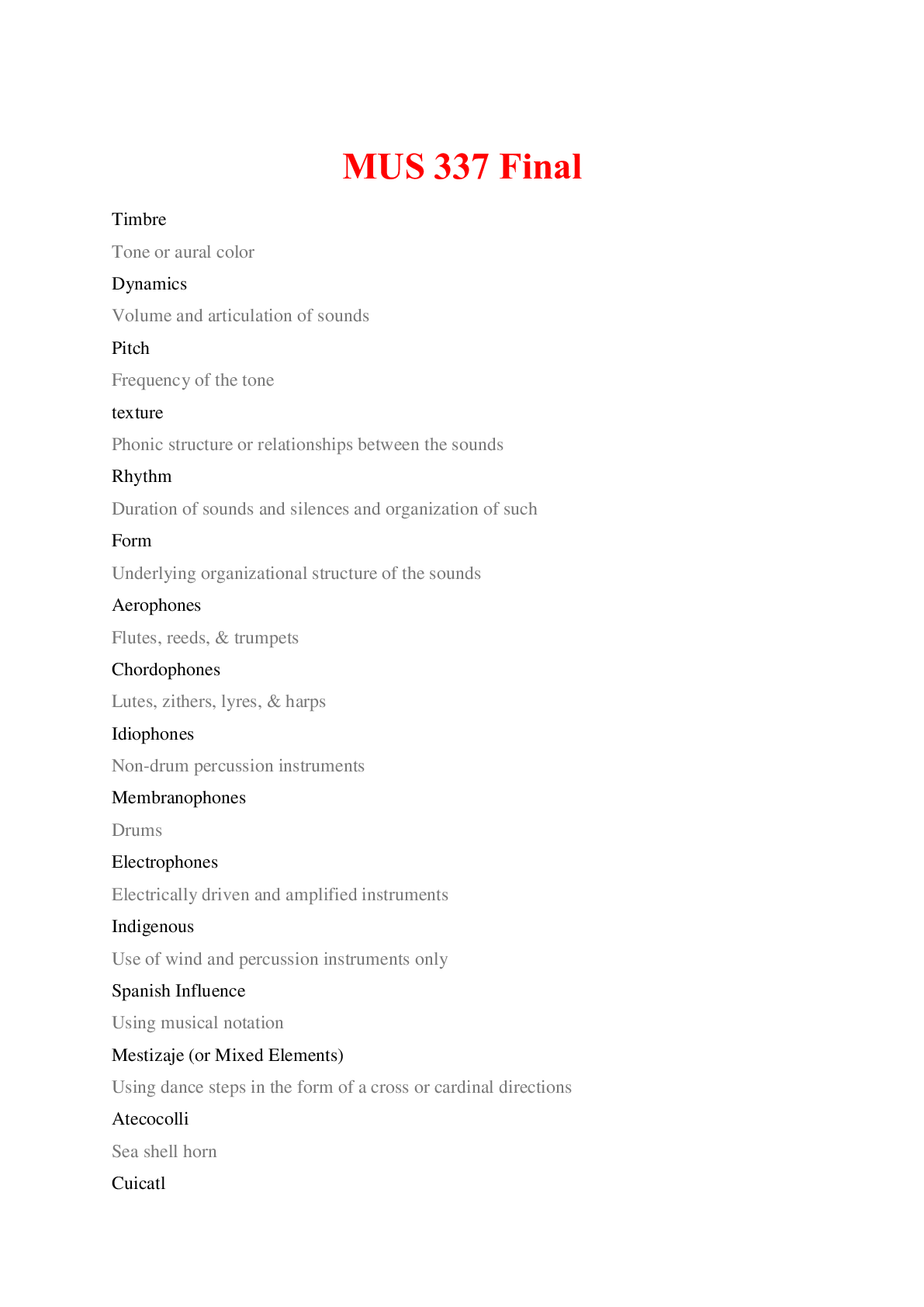

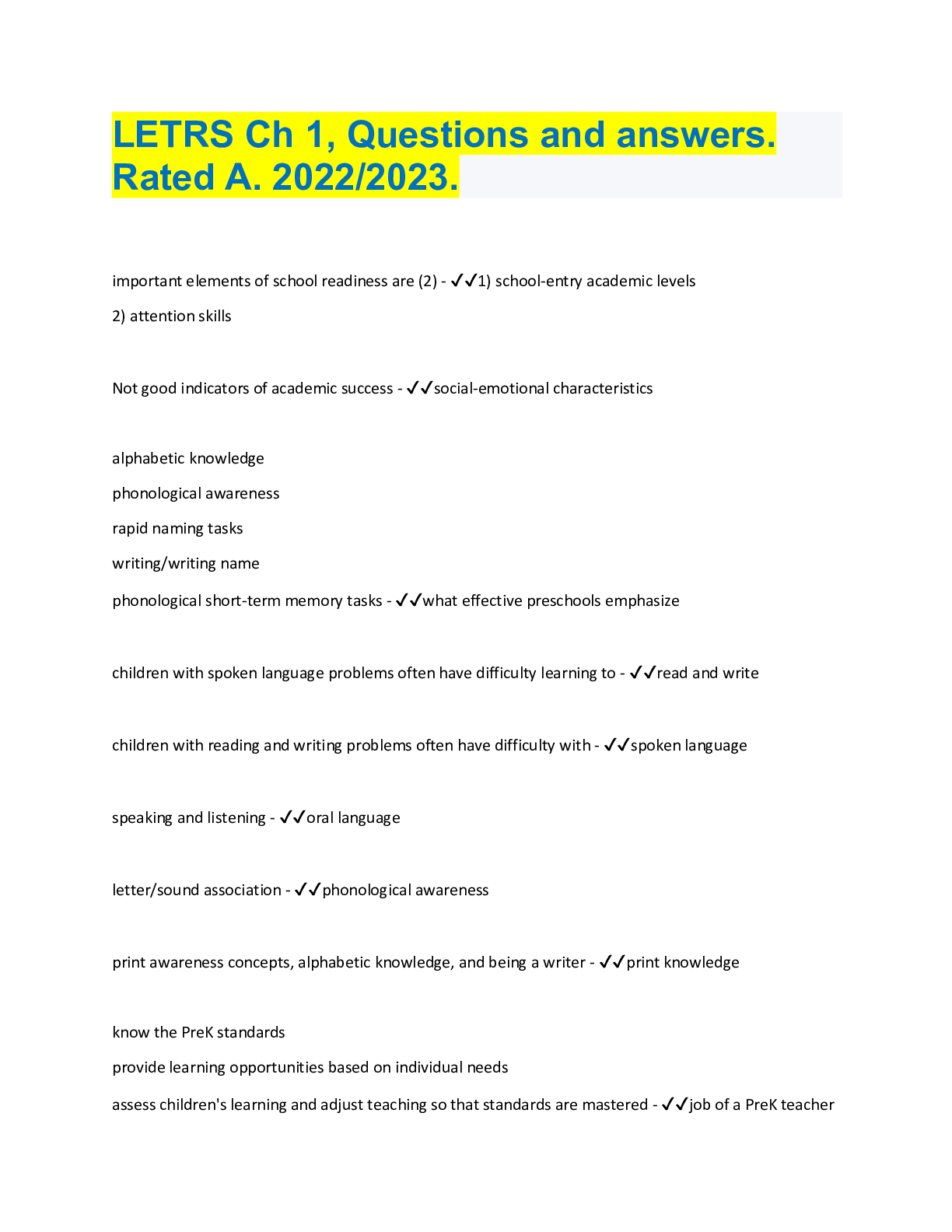
.png)
.png)

.png)
